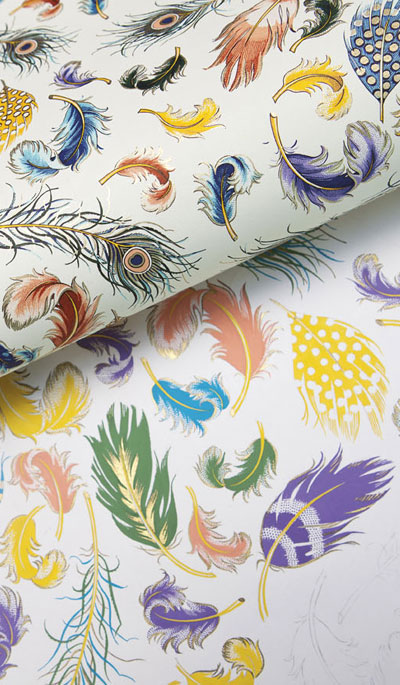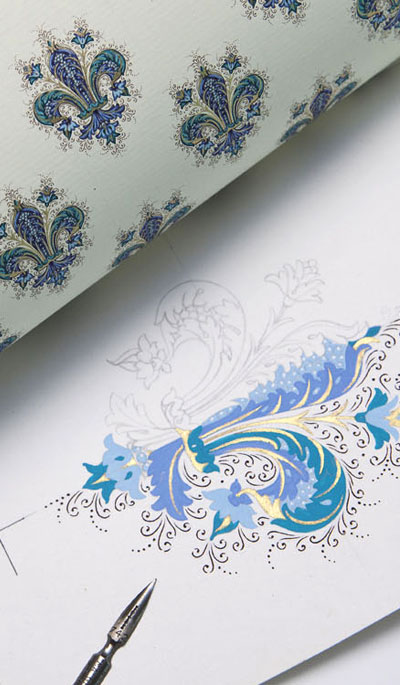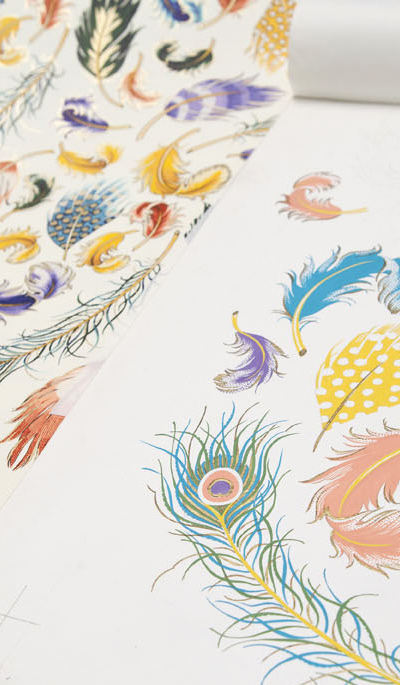Patrizia Margheri Design.
Patrizia Margheri,
a versatile and talented artist with extraordinary technical skills who has been able to convey over the years, through her countless works, her love for art, tradition and, more generally, for beauty.

Already since the early 70s, she exhibits her works in many cities, including Florence, Montecatini, Viareggio, Ravenna, Milan, and Cannes.
The exhibitions, both individual and collective, allow Patrizia Margheri, in those same years, to show her particular pictorial style to an ever-larger number of people.
Her works, admired and coveted, will soon be part of numerous private collections.
In the 80s, Patrizia Margheri abandons her style and radically changes genre.
Being a scholar of Art History, she develops a passion for the Renaissance illuminated manuscripts, concentrating her attentions and studies on the precious floral illustrations that adorn them.
Thus begins a new pictorial journey that, after extensive researches also into museums, churches, and monasteries, allows Patrizia Margheri to finally express her new artistic flair with magnificent multi-coloured decorations in a sort of graphic reinterpretation of the ancient illuminated manuscripts.

In those same years, after quitting teaching, Patrizia Margheri begins an exclusive collaboration with the company Rossi 1931, first as an external consultant, then as Creative Director.
Many are the paintings in “Florentine” style, so more popularly called, created by Patrizia Margheri until the end of the 90s, where the gold colour, an essential constant, prevails and triumphs in the illustrations.
Flowers, fruits, volutes, cherubs, and many other iconic subjects, true essence of this style, always revisited with a “modern” approach by Patrizia Margheri, give life to a very personal and well recognizable new artistic expression.
Soon, most of these illustrations are published by Rossi 1931, which, under the careful direction of the author, creates a wide range of paper products such as decorative paper, writing paper, cards of various kinds, and much more. These products, distributed on the market, will immediately have a great success both nationally and internationally. Even the press, especially of the sector, will dedicate many articles to the author, recognizing the merit of having skilfully reinterpreted the Renaissance decorations and having been able to apply them, with great artistic sensitivity, even in the paper industry.

Work after work, over the years, many other subjects and eras have been the subject of attention and study by Patrizia Margheri.
Borgo San Lorenzo, a town where a much more famous fellow citizen lived and worked, the painter, decorator, graphic artist, and ceramist Galileo Chini, one of the most important protagonists of the Art Nouveau style in Italy, could not but influence the artistic production of Patrizia Margheri.
The Art Nouveau style, not just the Italian one, thus becomes a style to study and offer, always appropriately reinterpreted graphically and chromatically, in many new and detailed paintings still fruit of the patient and tireless work of Patrizia Margheri, who also never stops traveling to deepen her knowledge about the various topics object of her interest.
In more recent times, the artist's attention shifts toward Middle Eastern art and in particular toward painting and ceramic art.

The arabesque as a universal ornamental style, stylization of plant forms and above all representative of geometric themes and symbols borrowed from calligraphy, becomes a new and immense source of inspiration for Patrizia Margheri. The many similarities of the arabesque style with her now famous past creations, especially the ones in “Florentine” style, give life to an important number of brand new illustrations, most of which commercially used successfully.
To this day we can count hundreds of illustrations, in various styles, made over the years by Patrizia Margheri, some of which are still unpublished and strictly catalogued and preserved, at the behest of the author, at the Rossi 1931 company archives and at the SIAE (Italian Society of Authors and Publishers) in Rome.
The versatile nature of the decorations created by Patrizia Margheri has aroused great interest and curiosity even in the fashion sector. Some important international “Maison” have seen, in the drawings of Patrizia Margheri, a new source of inspiration to draw from for the creation of many collections with an apparently classic character but, in many ways, even innovative.
The creatives of the various “Maison” and Patrizia Margheri had fun playing with colours, fabrics, and applications, while always leaving the beautiful designs in their original essence as the leitmotiv of the fashion collections.





